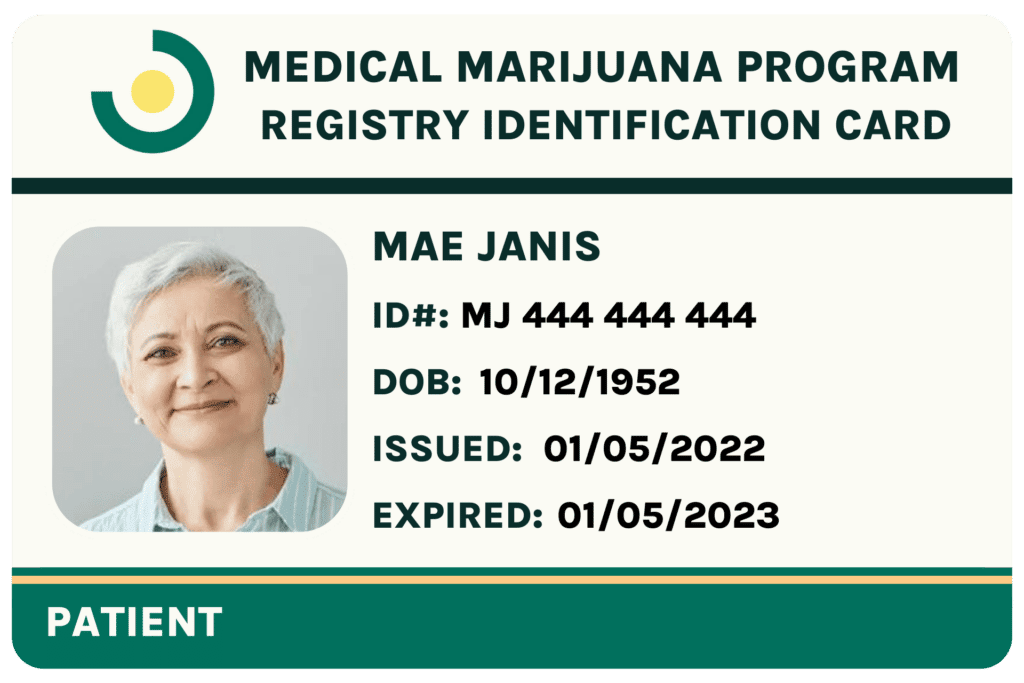The Future of Medicinal Use: Insights into 2025 Cannabis Policy Reform Legislation
by Nimra Shakil · February 19, 2025
Discover how the 2025 cannabis policy reform legislation is reshaping medical marijuana access across the U.S. Learn about key legal changes, cannabis legalization benefits, economic impacts, and future reforms aimed at improving patient access and public health policies.

Cannabis reform in 2025 is transforming access to medical marijuana across the United States. More states are steadily updating laws to legalize medical cannabis. This makes it easier for patients with conditions like chronic pain, epilepsy, and PTSD to receive treatment. As public acceptance grows, lawmakers are introducing new cannabis laws to expand access and improve regulations.
However, challenges remain in this realm. Many states still restrict cannabis use, and conflicting state and federal laws create legal confusion. The 2025 cannabis policy reform legislation aims to address these issues by improving regulations, ensuring patient safety, and making medical cannabis more accessible.
This article explores key policy changes and the benefits of cannabis for medical use. It also explores what the future holds for medicinal cannabis in the U.S.
Overview of 2025 Cannabis Reform Legislation
State legislatures are making major changes to marijuana laws in 2025. Some states are expanding medical cannabis programs, while others are moving toward full marijuana legalization. Lawmakers are responding to growing public support and new research on cannabis for medical use.
At the same time, federal lawmakers are reviewing marijuana policy. The Controlled Substances Act is under revision, and many are pushing for federal cannabis reclassification.
This shift in cannabis legalization could remove restrictions on the cannabis industry. Cannabis businesses will be able to operate legally with fewer barriers. This will also come with improved banking access and reduced financial risks for cannabis business owner.
Key Changes in Cannabis Reform Policy
Many states are revising cannabis laws to increase patient access. Some are legalizing medical marijuana, while others are expanding their programs.
- Tennessee is considering legalizing medical cannabis for cancer and epilepsy patients.
- Kentucky lawmakers are pushing for full cannabis reform.
- Indiana is debating not just decriminalization but also a regulated cannabis market.
On the federal level, there is growing support for updating the status of cannabis. This could provide clearer guidelines for states and reduce legal conflicts between state and federal cannabis laws. If approved, the change would benefit both medical cannabis patients and businesses by creating a more stable legal environment.
Federal vs. State-Level Policy Conflicts
While some states are expanding access, others are pushing back against marijuana reform.
Only 24 states have fully legalized cannabis for adults. Some states allow medical cannabis, but 11 still have no medical program. In 19 states, people can still go to jail for possessing even small amounts of cannabis. These legal conflicts make it harder for businesses and patients to navigate state laws.
The lack of federal clarity continues to slow progress. Until federal lawmakers finalize cannabis reform, many states remain hesitant to change their policies. This creates uncertainty for businesses, patients, and healthcare providers working with medical cannabis.
Focus on Medical Use of Marijuana
States are expanding medical cannabis access as new research supports its health benefits. Lawmakers recognize cannabis as an effective treatment for medical conditions like chronic pain, PTSD, and epilepsy. This has led to new laws making it easier for patients to get medical cannabis.
- Texas is expanding its medical cannabis program to cover more conditions.
- South Carolina and Iowa are also introducing new medical cannabis laws to help more patients.
The 2025 cannabis policy reform legislation is a major step toward making medical cannabis safer and more accessible.
However, challenges remain despite progress. Some states still impose strict limits on THC levels or require extensive patient registration. Advocacy efforts will help shape cannabis policy and ensure patients get the treatment they need.
The Science Behind Medical Cannabis: What Research Says
In 2025, cannabis reform is expanding access to medical marijuana, but scientific research is leading the way. Studies show cannabis helps with chronic pain, epilepsy, PTSD, and multiple sclerosis. As laws change, more clinical trials are helping patients and doctors understand how cannabis works as medicine.
A major shift came in 2025 when the U.S. Drug Enforcement Administration (DEA) reclassified cannabis. In this shift, DEA moved cannabis from a Schedule I to a Schedule III drug. This change means cannabis now has accepted medical use.
With fewer restrictions, scientists can study cannabis products more freely. Research now focuses on CBD oil, THC treatments, and how cannabis can replace opioids for pain relief.
How Cannabis Works for Medical Conditions
Medical cannabis works with the body’s endocannabinoid system, which controls pain, mood, sleep, and immune response. The two main compounds in cannabis plants—THC (tetrahydrocannabinol) and CBD (cannabidiol)—offer different medical benefits:
- THC helps with pain, nausea, and appetite loss which is useful for cancer patients and people with chronic illnesses.
- CBD has anti-inflammatory and neuroprotective effects. Doctors use CBD to treat epilepsy, anxiety, and neurological disorders because it does not cause a high.
With more states legalizing cannabis for medical use, patients now have access to more cannabis products. Doctors are prescribing medical marijuana products for conditions that previously had limited treatment options.
New Medical Research in 2025
In 2025, large-scale studies show how cannabis helps with medical conditions. Some key findings include:
- Pain Management: Research confirms medical cannabis reduces opioid dependency. Many patients prefer cannabis over prescription painkillers because it has fewer side effects and a lower risk of addiction.
- Neurological Disorders: The FDA has approved cannabis-based medications for epilepsy. New studies suggest cannabis may help treat multiple sclerosis and Parkinson’s disease.
- Mental Health Benefits: Clinical trials show that cannabis helps with PTSD and anxiety. This is especially beneficial for veterans who struggle with traditional medications.
Since cannabis is now a Schedule III drug, scientists have more freedom to conduct clinical trials. This could lead to FDA-approved cannabis-based medications and expand medical cannabis programs in more states.
Patient Benefits and Perspectives on Medicinal Cannabis
More patients are choosing medical cannabis over prescription drugs. It helps with pain, sleep, anxiety, and appetite without the risks of opioids. Unlike strong painkillers, cannabis does not cause severe withdrawal symptoms or dangerous overdoses.
Doctors are also becoming more open to recommending cannabis. As research proves its benefits, medical cannabis is gaining recognition as a trusted treatment. States with clear cannabis laws and easier patient access see more doctors prescribing it.
Personal Stories: How Medical Cannabis is Changing Lives
Medical cannabis is improving lives across the United States. Veterans with PTSD, cancer patients undergoing chemotherapy, and people with chronic pain report better quality of life.
A 2025 study found that veterans using medical cannabis had fewer PTSD symptoms and needed fewer prescription drugs. Cancer patients reported less nausea and better pain control, making treatment easier to tolerate.
Patients with chronic pain and multiple sclerosis also see major improvements. Many prefer cannabis over opioids because it provides relief without the risk of addiction.
Advocacy for A Patient-Centric Cannabis Policy
Advocacy groups and medical professionals are pushing for patient-first cannabis policies. They aim to lower costs, increase insurance coverage, and expand medical cannabis programs. Organizations like NORML and the MPP continue to fight for cannabis access, helping patients get the treatment they need.
As cannabis laws evolve, more people will benefit from safe, legal, and medically supervised cannabis use. The 2025 cannabis policy reform legislation is a major step toward patient-centered healthcare.
Economic and Industry Impact of Cannabis Legalization
Cannabis legalization has significantly influenced the U.S. economy, notably through increased tax revenues and job creation.
Tax Revenues and State Funding
Legalizing marijuana has generated substantial tax income for states. In 2023, states permitting personal cannabis use collected $4 billion in tax revenue.
This influx supports public health initiatives, infrastructure projects, and educational programs. For instance, Illinois reported over $490 million in cannabis-related tax revenue in 2024, bolstering state funds.
Job Creation in the Cannabis Industry
The cannabis sector is a robust source of employment. As of 2024, it supports over 440,000 full-time jobs across cultivation, retail, and compliance sectors.
This growth is evident in states like Connecticut, where colleges offer cannabis job training programs to meet industry demand.
Projections indicate the U.S. cannabis industry could reach nearly $45 billion in 2025. This will further enhance job opportunities and economic benefits.
Cannabis legalization contributes to economic growth through increased tax revenues and job creation, positively impacting various sectors nationwide.
Legal Challenges and the Future of Medicinal Cannabis Laws
Even as cannabis reform expands in 2025, many legal challenges remain. Conflicting state and federal laws make it hard for patients, businesses, and healthcare providers to follow cannabis regulations. Some states have fully embraced cannabis legalization, but others still have strict cannabis laws that limit patient access. On top of that, there are different laws for the medical and recreational use of medical marijuana
At the federal level, lawmakers are working on marijuana policy changes to fix legal gaps. Experts believe future cannabis reform will focus on public health, criminal justice system updates, and stronger patient protections. These changes could make medical cannabis more accessible and legally safer for patients.
Common Legal Barriers for Medical Cannabis Patients
Even in states where medical use of marijuana is legal, patients still face challenges because of inconsistent laws.
Different State Laws
Some states accept out-of-state medical marijuana cards, but others do not. This makes it hard for medical cannabis patients to get their medicine when they travel.
Strict Medical Cannabis Rules
Some states limit THC levels, have long approval processes, and charge high fees. Even patients who qualify for medical marijuana struggle to get it.
Job Security Issues
Many states do not protect employees who use medical cannabis. Employers can still fire or discriminate against patients, even when they legally use cannabis for medical conditions.
Conflicts Between State and Federal Law
Some state legislatures support cannabis reform but the federal government still enforces old cannabis laws. This causes confusion for law enforcement, businesses, doctors, and patients.
These legal issues show people need stronger cannabis policy reforms. Patients deserve clear, fair laws so they can safely access medical cannabis without fear of legal trouble.
Expected Changes in Future Cannabis Policy
The 2025 cannabis policy reform legislation has already made progress, but more changes are coming.
Federal Rescheduling of Cannabis
Under the Controlled Substances Act, the DEA has reclassified cannabis from Schedule I to Schedule III drug. This means the medical use of cannabis is now possible. It also allows for more research and fewer restrictions on medical cannabis businesses.
Public Health and Criminal Justice Reforms
Experts say future marijuana policy will focus on public health and criminal justice system improvements. This could expand medical cannabis programs, update state laws, and remove legal barriers for patients.
More State-Level Reforms
Some state legislatures are working to add more qualifying conditions and lower patient costs. They are also working to increase THC limits in medical cannabis products. These changes would make cannabis for medical use easier to access.
The Future of Medicinal Cannabis Reform
The 2025 cannabis policy reform legislation is shaping the future of medical marijuana in the United States. As more states expand cannabis laws, patient access is improving. However, continued advocacy is essential to maximize cannabis legalization benefits and ensure cannabis reform helps everyone who needs it.
Patient-led efforts and lobbying are driving changes in state laws, making medical cannabis more widely available. Advocates are pushing for policies that reduce costs, expand qualifying conditions, and protect patients from discrimination. Engaging with lawmakers and supporting cannabis organizations will help strengthen these efforts.
Although there has been progress in the legal status of medical marijuana, challenges remain. Conflicting state and federal laws still create barriers, and some states continue to resist marijuana reform. Many opponents argue that cannabis plants with high THC levels have a high potential for abuse. These arguments limit cannabis legalization benefits for patients who rely on medical marijuana.
The push for fairer cannabis laws must continue to ensure safe, legal access for patients across the country. As public support grows, the future of medical cannabis looks promising. The pace and success of these changes will depend on continued advocacy and legislative action.
Last Updated: February 19, 2025
Get Approved for Your Medical Marijuana Card in Minutes!

Get Your Medical Card
Connect with a licensed physician online in minutes

Like This Article?
Share with your friends
Table of Contents
Keep Reading
-
Exploring Careers In The Cannabis Industry
Discover exciting career opportunities in the cannabis industry and unlock your full potential today. Explore the endless possibilities waiting for you in this booming field. Click now to kickstart your journey towards a rewarding career in Cannabis Industry Careers!
-
Enhancing Workout Performance With CBD
Supercharge your workout with CBD for enhanced performance, faster recovery, and optimal results. Learn how CBD can take your fitness routine to the next level now!
-
Does Weed Make You Gain Weight
Discover the surprising truth about whether weed causes weight gain and find out if it’s time to rethink your favorite herb. Click here to uncover the facts and make an informed decision about your health.



